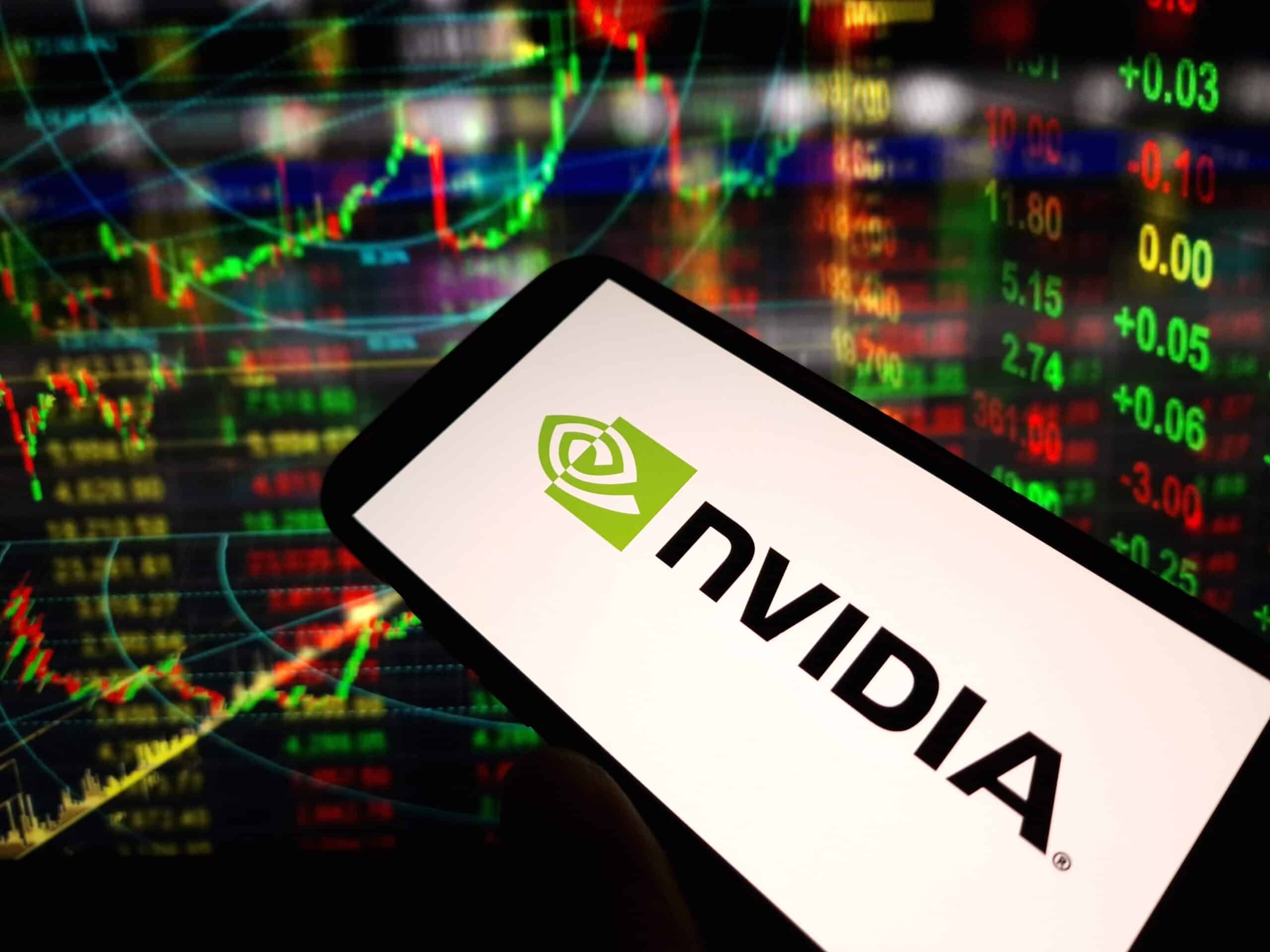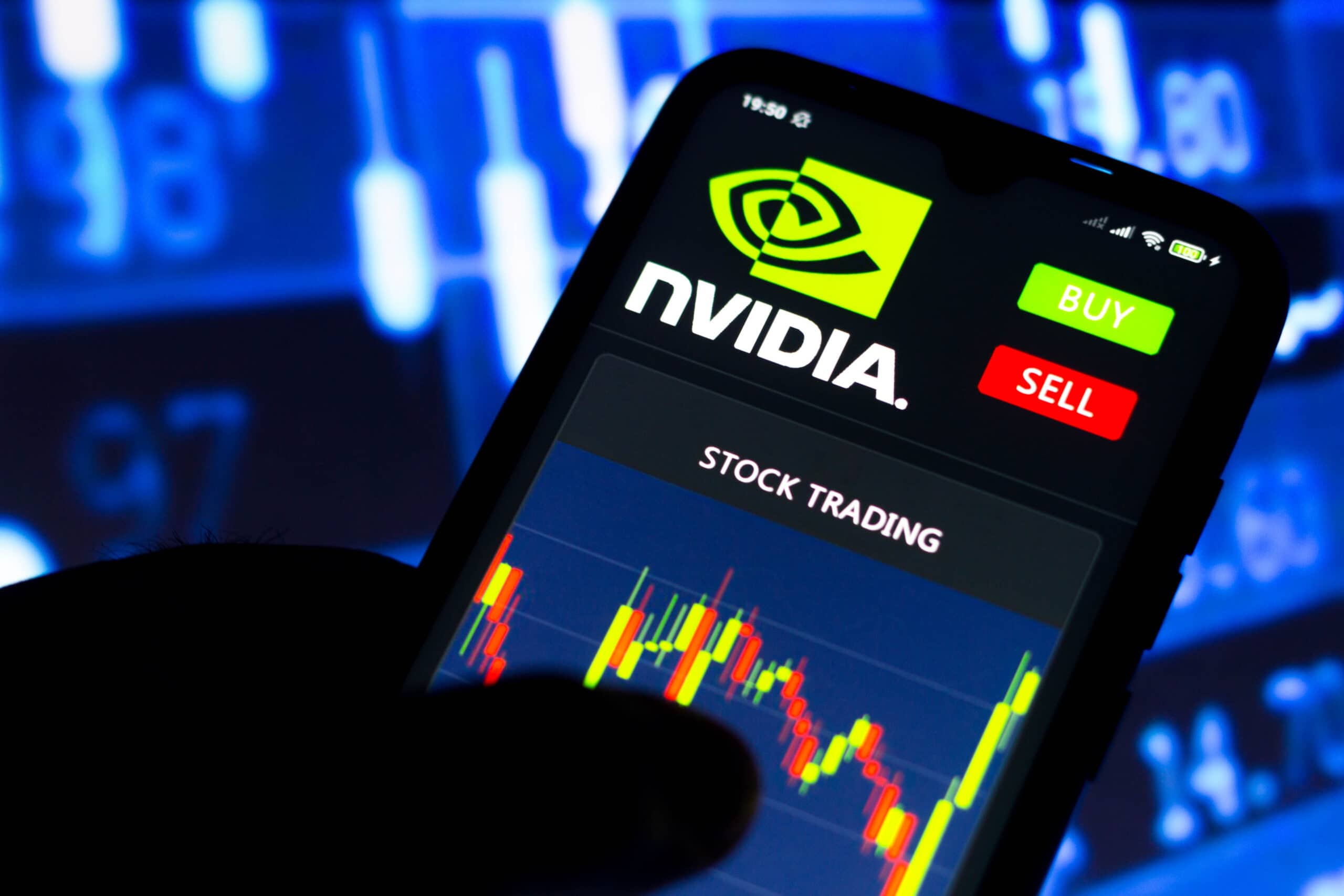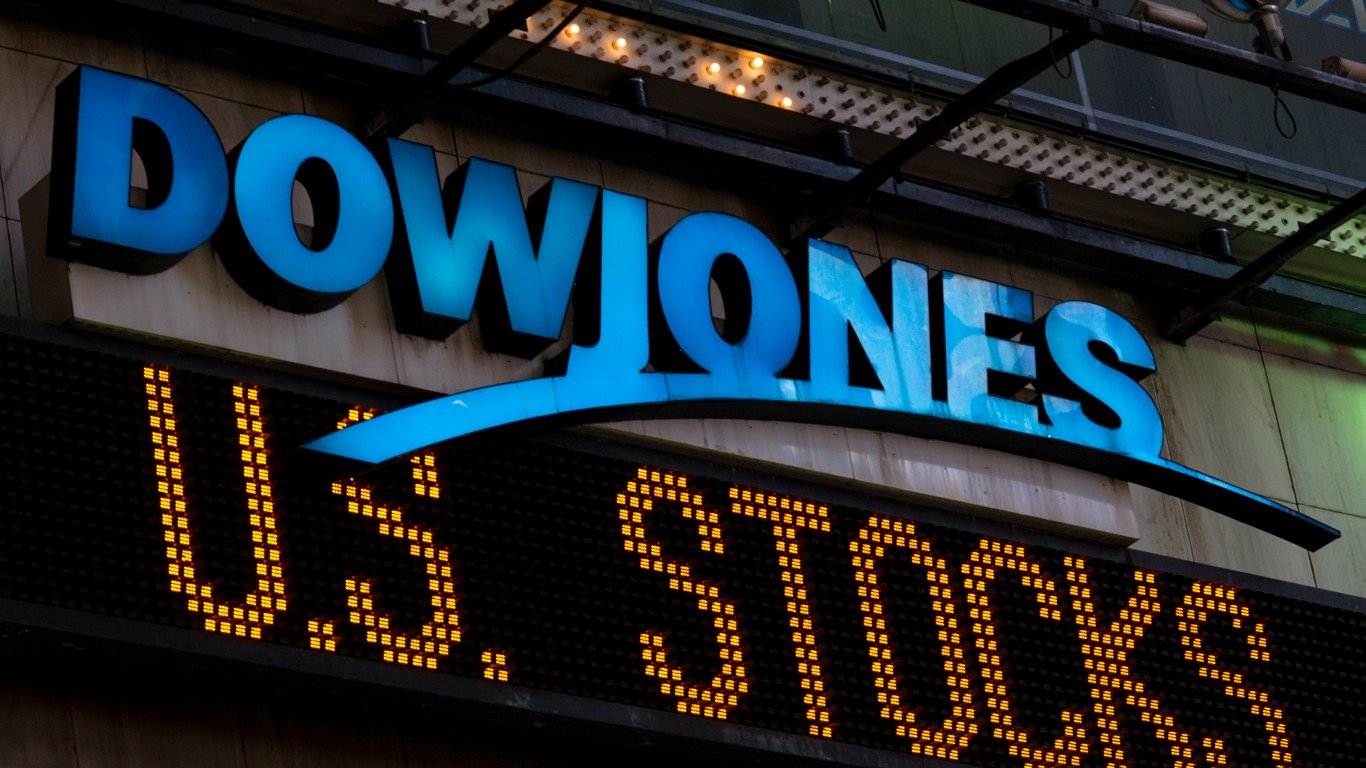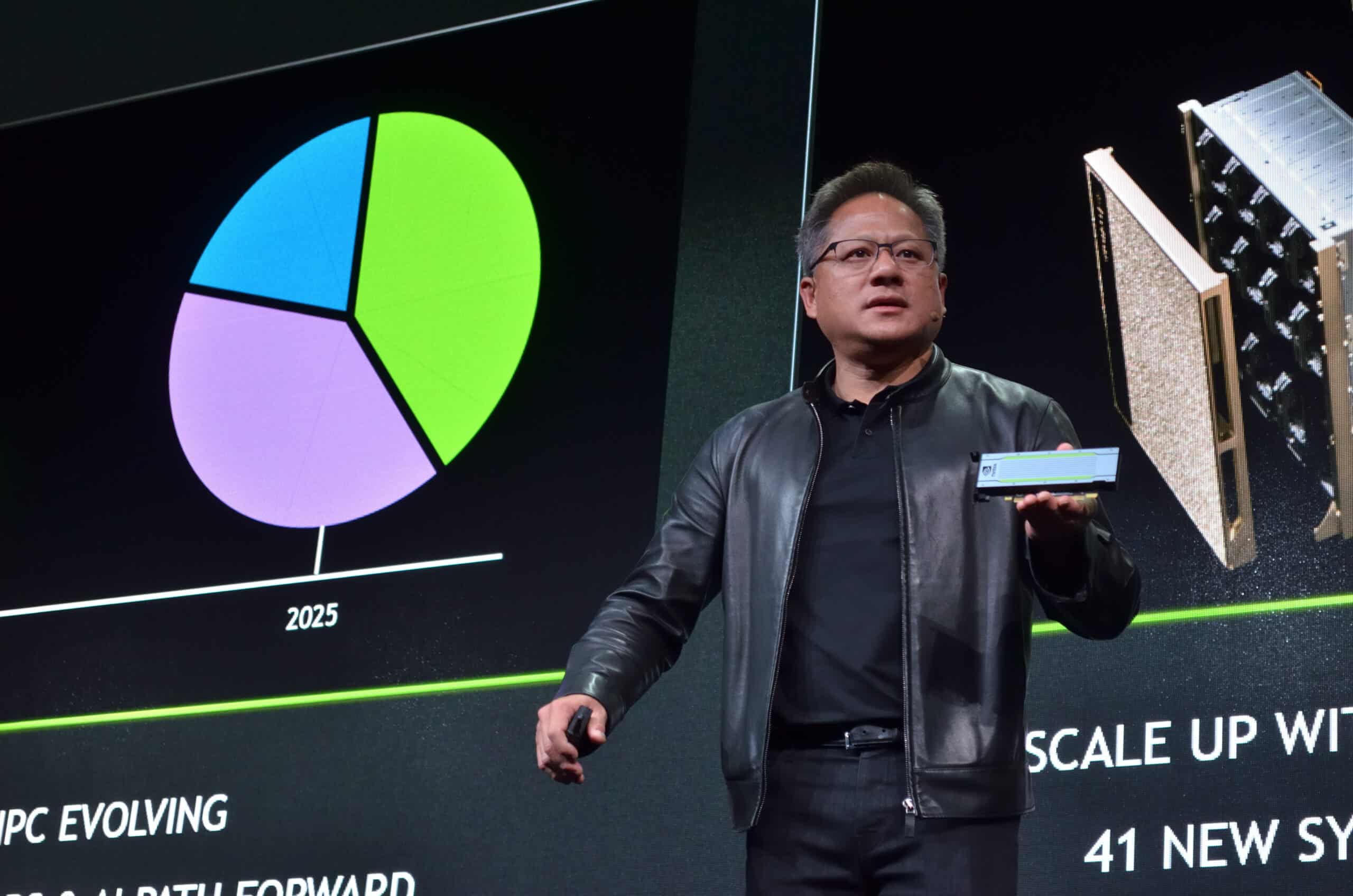

24/7 Wall Street Insights
- Nvidia (NASDAQ: NVDA) announced earlier in May that it would initiate a 10-for-1 forward stock split on June 7, 2024.
- Nvidia’s Graphics Processing Units (GPU) are essential for AI fueled virtual reality, training, and a panoply of other applications.
- Nvidia stock at the time of this writing is over $1,200 per share. Post split, this would equate to a much more individual investor affordable $120 per share.
- The 4-figure share price was viewed by some analysts as an impediment to an otherwise strong case for NVDA to be added to the Dow Jones Industrial Average group of 30.
- For investors seeking dividends, click here for a free report on two high dividend stocks.
Nvidia is one of the most popular stocks in the US market, thanks to the huge surge of interest in Artificial Intelligence (AI). After almost going bankrupt within its first three years of operation, CEO Jensen Huang has steered the company to survival with its Riva 128 graphics accelerator. This fueled enough growth to go public in 1999.
Nvidia’s breakthroughs with their Graphics Processing Units led to high profile use by Sony Playstation and Microsoft’s XBOX. As AI became a burgeoning industry, Nvidia’s RTX series of GPUs played a crucial role in virtual reality imaging. This would make Nvidia GPUs indispensable for further state-of-the-art AI development going forward.
The June 7th Split And What It Means

Nvidia announced its Q1 2024 results on May 22, 2024. The results wowed Wall Street:
- Quarterly revenue hit a new record of $26.0 billion, up 18% from Q4 and up 262% year over year.
- Quarterly Data Center revenue hit a new record of $22.6 billion, up 23% from Q4 and up 427% year over year.
- A Ten-for-one forward stock split effective June 7, 2024
- Cash dividend raised 150% to $0.01 per share on a post-split basis, payable starting on June 28th for shareholders of record.
The stock split in itself is the equivalent of getting 10 dimes for a dollar. A stock split doesn’t change any of Nvidia’s financial earnings. With a price of over $1200 per share at the time of this writing, this will equate to 10 shares at $120 each. However, it mechanically can trigger a number of positive events for Nvidia stock.
- A $1200 share price makes Nvidia too expensive for the majority of retail investors to place a meaningfully sized “buy” order. This relegates much of NVDA trading to institutions.
- A reduced $120 price allows for greater retail investor participation. The GameStop (NYSE: GME) meme stock phenomenon has shown the power of retail investors to move markets.
- Increased liquidity will inevitably lead to reduced volatility, which will attract a wider range of more conservative minded investors.
- Some analysts have posited that due to Nvidia’s critical importance to 21st century technology, the only reason for its omission from the Dow Jones Industrial Average has been its lofty, 4-figure stock price.
The Dow Jones Membership Perks

The Dow Jones Industrial Average was created in 1896 by Charles Dow, co-founder of The Wall Street Journal. It is a price-weighted index culled from 30 listed stocks that he felt represented a snapshot of US industry. Dow published it in the WSJ, and it continues to be cited as a snapshot reflection on the health of the US industrial economy today.
While inclusion in the elite Dow 30 is certainly prestigious, there are a number of other benefits that Dow membership entails:
- Dow stocks are automatically tracked by trading algorithms as well as flesh-and-blood analysts for pricing index ETFs, options, and other derivative hedging strategies.
- There are mutual funds, pension funds, and other institutions that automatically buy a minimum portfolio percentage of Dow stocks as a mandated strategic portfolio policy.
- McKinsey & Co. published a white paper on index effects for individual stocks. They found that just the inclusion on a major index, other positive factors notwithstanding, can give a positive bump to a stock for an average of 45 days. As Nvidia already has significant positive news, this will be like adding kerosene to a bonfire.
Forging Ahead and Backup Contingencies

Jensen Huang is sitting in the catbird seat at the moment. Both Larry Ellison of Oracle (NASDAQ: ORCL) and Elon Musk of Tesla (NASDAQ: TSLA) have been privately courting Huang for allocation of Nvidia’s highly coveted H100 GPUs, and will likely want the higher memory capacity H200s as well. Tesla has already reportedly budgeted between $3-4 billion for Nvidia products in 2024.
Huang is also aware of his greatest vulnerability: Nvidia’s reliance on Taiwan Semiconductor (NYSE: TSM) for the bulk of Nvidia’s manufacturing needs. While Nvidia and Taiwan Semiconductor have made plans for a new plant in Taiwan, the looming threat of an invasion by China increases daily. Taiwan’s Ministry of National Defense has already announced a forthcoming order for 5th generation Lockheed Martin F-35 fighter jets this summer.
Sun Tzu’s The Art of War lists the Way, the weather, the terrain, the leadership, and discipline as the 5 keys to strategic military victory. The “terrain” involves making the decisive steps to use situations and elements at hand within a general’s control to plan contingencies and attacks. Taking a page from Sun Tzu, Huang has initiated talks with Intel (NASDAQ: INTC) about future chipmaking. He has also initiated memory chip negotiations with Samsung (OTC: SSNLF), so he is not going to irreparably risk Nvidia’s future in the event of war on a single supplier.
Given that Nvidia has plenty of demand for current and future GPUs as AI continues to develop, the earnings are likely to continue to grow. The stock split added liquidity will surely put more stock in the hands of a wider number of investors, and if there is a Dow inclusion, this may launch a geometrical increase in institutional investors who would ordinarily not consider Nvidia.
24/7 Wall Street has covered Nvidia numerous times in the past. Additional ones in the near future are very likely.
Thank you for reading! Have some feedback for us?
Contact the 24/7 Wall St. editorial team.



